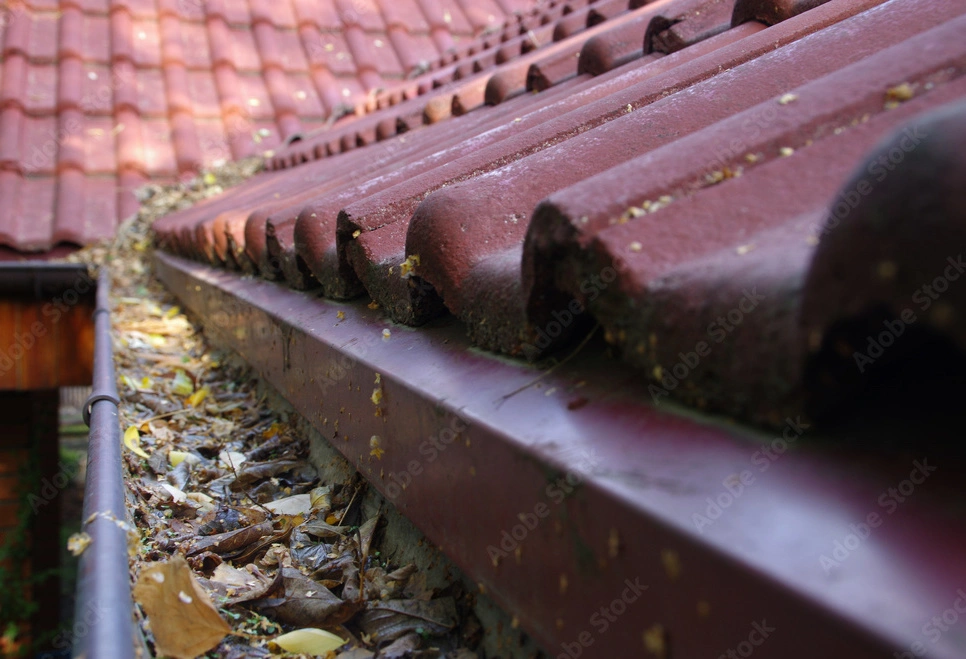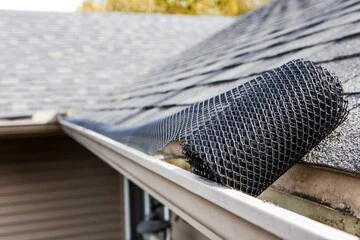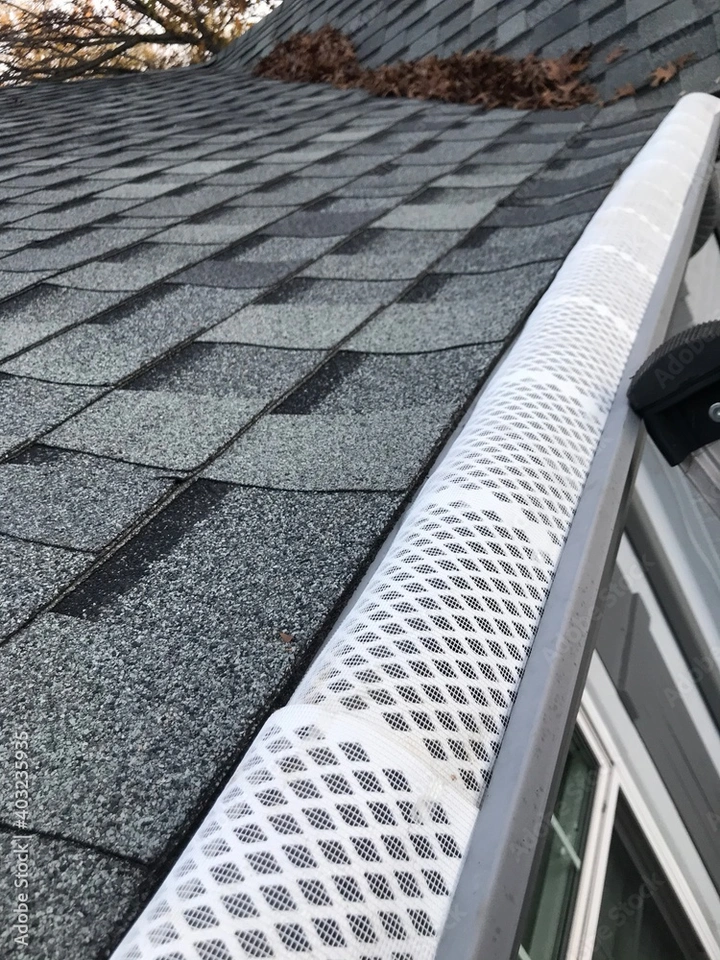
Are you tired of constantly cleaning out your gutters? Gutter guards could be the cost-effective and convenient solution to this problem. Our well-structured guide shows you the basics of gutter guard installation in just a few easy steps, saving you time and money in the long run.
We’ll dive into:
- Choosing the right gutter guard 🏠
- Cleaning the gutters 🧹
- Gathering tools 🛠️
- Following the manufacturer’s instructions 📑
Keep reading if no-clog gutters sound appealing to you!
And don’t hesitate to reach out to get your gutters inspected.
1. Choosing the Right Gutter Guard
When choosing the right gutter guard, consider factors such as the type of guard and its compatibility with your gutters.
Types of Gutter Guards
Six varieties of gutter guards are commonly available for purchase: micro-mesh, mesh, screen, reverse curve/surface tension, brush, and foam. Each type presents unique features catering to different needs.
Micro-mesh guards effectively permit water flow while blocking even the smallest debris. Mesh models operate similarly, though they might not catch minutiae particles as efficiently.
Further enhancing clog prevention are screen guards- these durable products made from metal or plastic keep larger garbage out but allow rainwater through their small hole designs.
Brush gutter guards employ bristles that act as a barrier against unwanted trash entering the gutters while ensuring unhindered water flow. As another leaf protection solution, foam models focus on debris exclusion and proficiently maintain good water circulation in your drainage system.
A more sophisticated choice would be the reverse curve or surface tension gutter guards; using water’s inherent properties to channel it directly into the drain while leaving debris behind is its primary function.
Thus each type provides different levels of protection and can be selected based on individual requirements related to factors such as expected rainfall intensity and tree coverage in the vicinity.
Factors To Consider When Choosing

Firstly, selecting the right style among types of gutter guards is a critical step. You have three basic options: mesh or plastic screens, gutter covers, and gutter inserts.
Each has its unique features appropriate for specific needs. Another crucial factor involves the qualifications and certifications of your potential installation company.
Verifying the accreditation and licensing assures you that they meet industry standards in providing their services. It’s also beneficial to dive into reviews and feedback from previous customers, as these can give insights into their work quality.
You should explore warranty options for your chosen gutter guards for future protection and peace of mind; knowing you have coverage makes a significant difference. Lastly, thorough research and careful consideration lead you to an informed decision about which is suitable for your home.
2. Preparing for Installation
Before installing the gutter guards, thoroughly clean out the gutters and test them for leaks or clogs. Gather all the necessary tools you will need for installation as well.
3. Cleaning Out the Gutters
Cleaning out the gutters plays an integral role in home maintenance. This task, typically performed twice a year during spring cleaning and fall cleaning times, prevents potential water damage to your house.
It’s vital to remove all leaves, twigs, and other debris as part of this process because it sets the groundwork for efficient gutter guard installation. A clean gutter system ensures that rainwater flows seamlessly towards downspouts, eliminating any chances of standing water or blockages.
- Testing the Gutters
After cleaning out the gutters and before installing gutter guards, it’s crucial to test them to ensure they are functioning. You can do this using a regular garden hose and running water through the gutters.
That will help you identify clogs or areas where water is not flowing smoothly. By testing the gutters, you can ensure that once the gutter guards get installed, they will effectively keep debris out and allow rainwater to flow freely.
- Gathering Necessary Tools
To ensure a smooth and successful gutter guard installation, you’ll want to gather all the necessary tools beforehand. It will save you time and frustration during the process.
Some essential equipment includes measuring tape, drill or screwdriver, ladder, marker or pencil, and safety gear such as gloves and safety glasses. By having these tools ready, you can effectively measure the dimensions of your gutters and install the guards with ease.
Remember to prioritize safety by wearing protective gear throughout the installation process.
- Following Manufacturer’s Instructions
To ensure a successful gutter guard installation, it is crucial to carefully follow the manufacturer’s instructions. These instructions will provide you with step-by-step guidelines on how to properly install the gutter guards.
Remember to trim the gutter guard sections as needed and overlap them correctly during installation for optimal performance.
- Installing Snap-on Guards or Screw-fastened Guards
Installing snap-on guards or screw-fastened guards is a crucial step in effectively protecting your gutters from clogs. These guard options provide a secure and reliable method to prevent debris buildup and reduce the need for frequent gutter maintenance.
Whether you choose snap-on guards or screw-fastened guards, both installation methods are relatively straightforward and can be done by following the manufacturer’s instructions.
DIY vs. Professional Installation

DIY gutter guard installation offers a cost-effective option for homeowners looking to save money. With a DIY project, you can avoid the expense of hiring a professional installer.
You won’t need any specialized tools or equipment either, making it accessible for most people. However, keep in mind that installing gutter guards yourself will involve physical work and ladder use.
It’s crucial to take safety precautions and be prepared for the physical labor involved.
On the other hand, opting for professional installation can help you avoid potential risks and injuries associated with DIY projects. You can hire an experienced installer like us at Clean Cut Roofing with the knowledge and expertise to handle the job safely and efficiently.
While this may come at an additional cost, it could save you from expensive medical bills caused by accidents during installation.
Clean Cut Roofing for Your Next Project
Installing gutter guards can be a simple and effective way to protect your gutters from debris and reduce the need for regular cleaning. By following the steps outlined in this guide, you’ll be able to choose the right gutter guards for your home, prepare for installation properly, and install them hassle-free.
If you are considering a new gutter guard installation project, you’ll want to reach out to us at Clean Cut Roofing. Contact us today with any questions or for an estimate!



